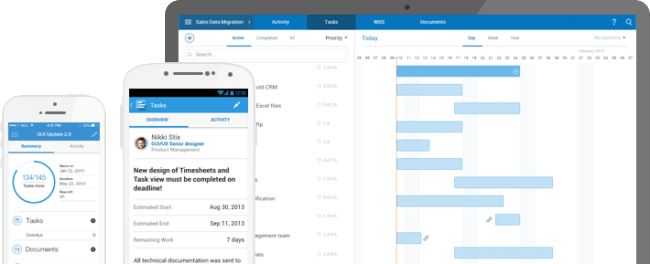In some businesses, especially in startups, employees may have to do other jobs here and there, aside from their basic responsibilities. One of the most critical of these “other jobs” is project management.
Even as more companies now prefer certified project management professionals, the reality is that getting a PMP certification can be quite an expensive commitment to make. Some professionals handed with additional project management responsibilities have to make do with mastering a simpler project management guide instead.
A help to the occasional/situational Project Manager
About 90% of project management is done by junior or occasional/situational Project Managers, and not necessarily by certified PMPs. By occasional/situational, we mean that some Project Managers get awarded the job because they happen to be there, within the situation, and have to rise to the occasion by learning from a project management manual, sometimes on their own time, unless given additional training time by upper management.
For example, in a software development team, there is usually one most experienced member, and naturally, this member is viewed as a leader by the team. From the viewpoint of the management, instead of hiring an all-new and separate PM, having this viewed leader handle project management responsibilities on top of his other duties would be more convenient. Management then rolls out a step-by-step project management guide to assist him, and then leaves him to get the job done.
Dealing with double duties
The challenge here is dealing with the added responsibility of managing projects alongside a normal job. From the same example, the newly appointed software developer-cum-project manager, aside from managing the software development part, has to contend with project management issues that can include planning, estimates, tracking, and so on.
If you’ve just been appointed an instant Project Manager, a quick rundown of a project management guide should help, just so you have an idea of the responsibilities you’ll need to deal with.
A quick-start guide to project management
- Setting expectations. Solidly establish the “who,” “what” and “why” of your project, a critical factor to achieving the right results. This way, you are effectively clarifying what you are trying to accomplish, and why.
- Developing your game plan. Next comes the “how” and “when” parts of your project. Once you’ve written down the basic components of your project, the next step is to set resource allocations. This answers the questions of who you want to get involved, what items you will need and what subtasks need to get done, how much will these all cost, at what cost will you be able to work with the plan, and when will these need to be accomplished.
- Get the team ready. This is the part where you start acquiring the key people you want to work with, and you define specific member roles, deadlines and responsibilities.
- Manage as you go along. This now includes the more repetitive parts, such as scheduling and rescheduling, status updates, real-time monitoring, reporting and reallocation of resources to adjust for headwinds or tailwinds, and the like.
- Make an effective close. As you end the project, this is where you make budget and performance reviews. What costs could you have avoided (or made) to accelerate project delivery? What aspects of the team and individual team members’ performance can be improved?
- An action plan for the next mission. After you’ve made your reviews, you work on a revised action plan that you and your team can execute for future projects, a plan that can potentially save you and the company a great deal of time and money.
- Develop your knowledge and confidence. Make sure you are keeping your eye on the most credible resources, such as The Digital Project Manager, for inspiration, how-to guides, tools, project management tips and tricks.”
Choosing the right tools to alleviate workload
Aside from your nifty little guide to project management, another effective step to take is to use a project management software as a tool to make the workload easier. Choosing a tool specifically tailored for project management, such as Comindware Project, helps to avoid being burdened by the sophistication required of full-time Project Managers.
Comindware has features that can dramatically simplify project management such as:
- automated priority-based planning
- real-time project status reporting
- automated resource allocation
- pre-integrated collaborative platform
- schedule and financial accounts tracking
- Microsoft Outlook integration
As an alternative or additive to a common project management guide, the recently released interactive tutorials also eliminate the need to create separate training programs to use the software effectively.
Conclusion
Because of the faster response-to-market that technology makes possible, organizations are making higher demands on professionals. Extra duties can be cumbersome, particularly if the main job is, in and of itself, already demanding. Aside from adapting a proven guide to project management, choosing an easy-to-implement project management tool is critical for the instant Project Manager’s sanity.

